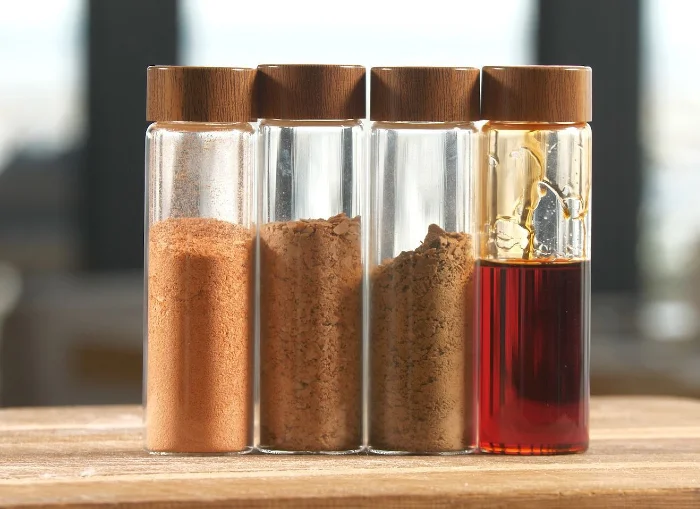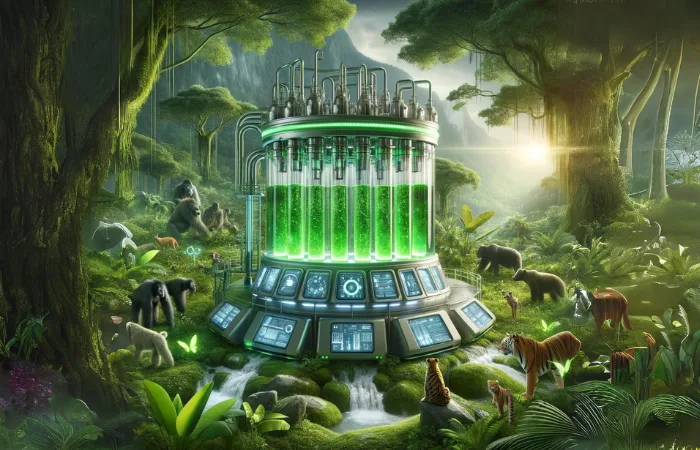Palm oil, a staple in our diets and daily products, comes with a hefty price for the environment and human rights. The rise of lab-grown oil, like the advancements in lab-grown meat, poses a question: Could this be the breakthrough we need for a more sustainable future?
Palm Oil: A Global Staple with a Dark Side
Though palm oil’s ubiquity in our lives is clear, its environmental and ethical implications are troubling. In the 2021-22 marketing year, the world saw a massive production of 73.8 billion kilograms of palm oil. However, this has led to deforestation, habitat destruction, and troubling labor issues.
A typical palm oil mill emits between 0.637 and 1.131 metric tons of CO2 equivalent per ton of crude oil. This alarming statistic has turned the spotlight on the need for sustainable alternatives like lab-grown oils.
The Challenges of Palm Oil Production
The palm oil story starts in the oil palm tree’s fruit, where the oil is laboriously extracted. This process, while cost-effective, fuels deforestation and habitat loss. A study by David L. A. Gaveau reveals that Indonesia, the world’s largest palm oil producer, lost about 8.3 million acres of forest to palm oil production.

Labor conditions and the environmental toll caused by palm oil plantations are another grave concern, and they’re not improving any time soon. In fact, Dakoa recently covered much of the downsides and harsh realities.
Fermentation: The Key to Lab-Grown Oils
Here’s where fermentation, an ancient technique, steps into the modern era.
Dr. Petri-Jaan Lahtvee, co-founder and co-CEO of ÄIO said, “Indeed, food production can be more sustainable, and one way to do it is by shifting it off the land and into a factory – in our case, a biorefinery unit.
This process uses microorganisms to convert sugars into valuable lipids. Dr. Lahtvee further explains, “The production of fats and oils in fermentation tanks is ten times more efficient than conventional methods. We are looking to transform the food systems through fermentation.”

Microbial Oil: A New Era of Sustainability
Microbial oil, derived from microorganisms like yeasts and fungi, offers a versatile solution. Dr. Lahtvee emphasizes its potential: “Today, the demand for alternative fats is on the rise, following the success of the alternative protein industry. Our approach involves fermenting these fats using low-value substrates like wood sugars and complex food processing side streams. Our microorganism acts as a workhorse, converting sugars into high-value lipids.”
The flexibility of these microorganisms in utilizing various carbon sources, from biodiesel-derived glycerol to food-processing waste, positions this method as both adaptable and sustainable.
The process hinges on nutrient-limiting conditions, promoting lipid accumulation in the microorganisms.
ÄIO’s use of oleaginous yeast exemplifies this innovative approach. Dr. Lahtvee asserts, “We cultivate yeast in bioreactors, where sugars transform into nutritious fats and oils. Separation methods yield microbial oil enriched with carotenoids and antioxidants. Our ingredients are available in powdered form, including fats, oils, naturally derived proteins, vitamins, and other beneficial components, like whole food.”

Circular Economy: The Core of Sustainable Food Production
The concept of circularity, where waste is minimized and resources reused, is central to microbial oil production. Dr. Lahtvee elaborates, “Biotechnology is a key driver in reducing our dependency on foods from traditional sources (like palm oil and animal fats), which are quite detrimental to our sustenance with population and demand growing.”

ÄIO’s methodology embodies circular economy principles. Their process leverages secondary materials and green production methods, reducing the environmental impact of the ingredients used in various applications.
Dr. Lahtvee further notes the potential impact of their method: “Our calculations show that we can mitigate 100 million tons of carbon dioxide annually by valorizing 7% of agricultural waste in Brazil, and this accounts for substituting merely palm oil. If we consider substituting animal fats, our offer is bulletproof.”
Challenges and Prospects of Lab-Grown Oil
While promising, the path to widespread adoption of lab-grown oils involves overcoming technological, regulatory, and market acceptance hurdles.
More To Discover
- The Zero-Energy Ultrathin Film That Can Protect Crops and Slash Food Waste
- EU Shakes Up Eco-Market: Bans ‘Greenwashing’ in Landmark Environmental Legislation
- Greenland’s Green Again: Ice Melts Reveal Viking-Era Landscape And That’s A Problem
- Hot Rocks Could Be the End of Fossil Fuels: Bill Gates Certainly Thinks So
It’s crucial to evaluate the environmental impact, including energy consumption and resource use, to ensure this innovation aligns with sustainability goals.
In conclusion, lab-grown oil stands as a potential game-changer in the sustainable food industry. However, its success hinges on navigating and overcoming various challenges, balancing innovation with environmental and economic viability.




















